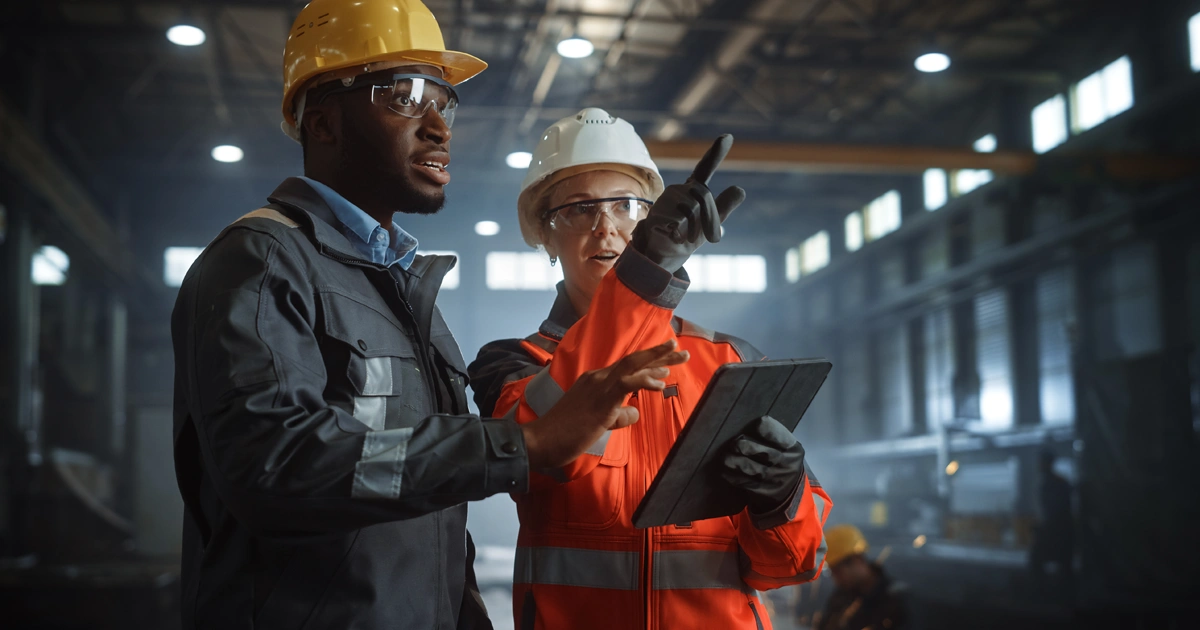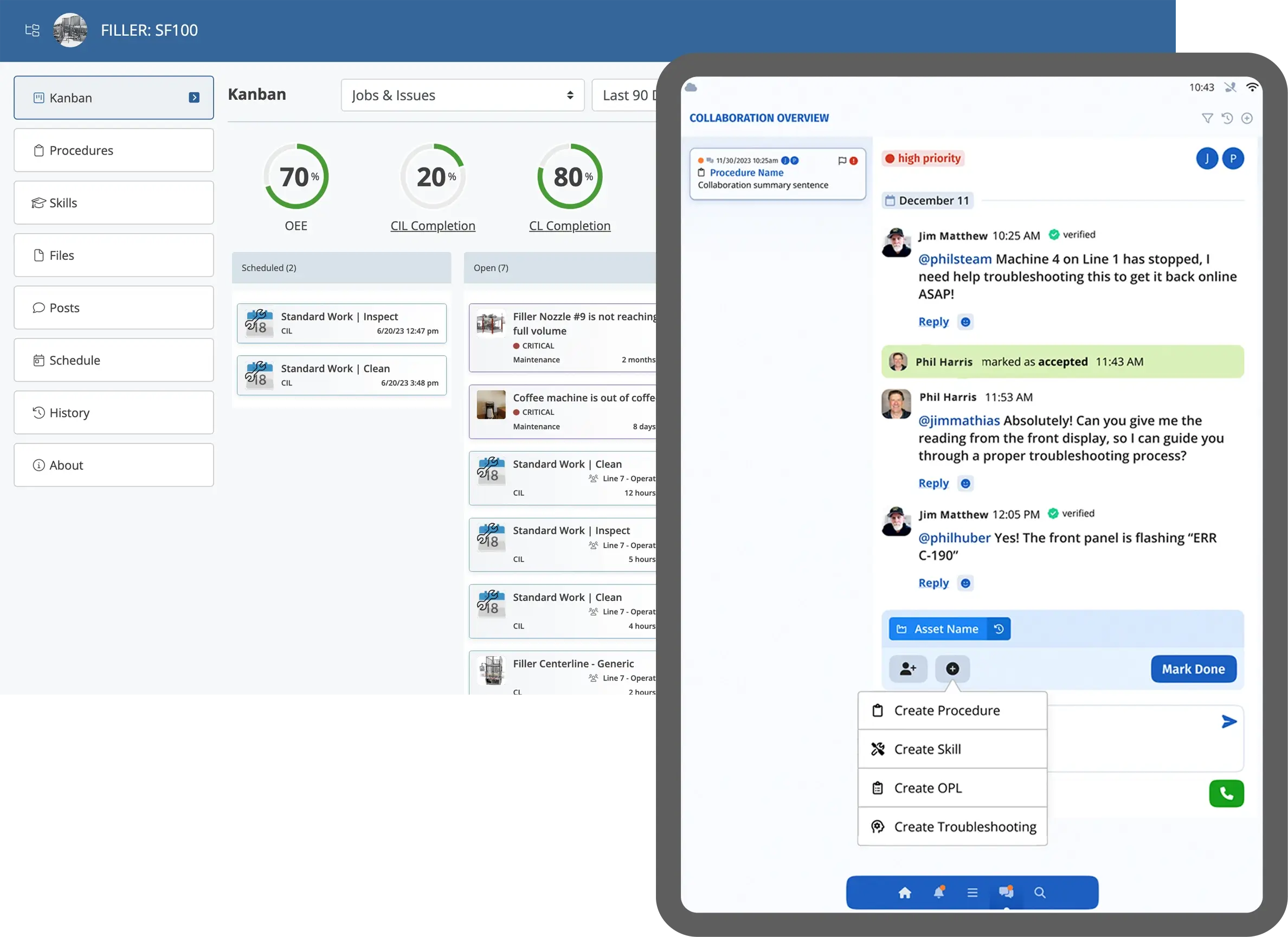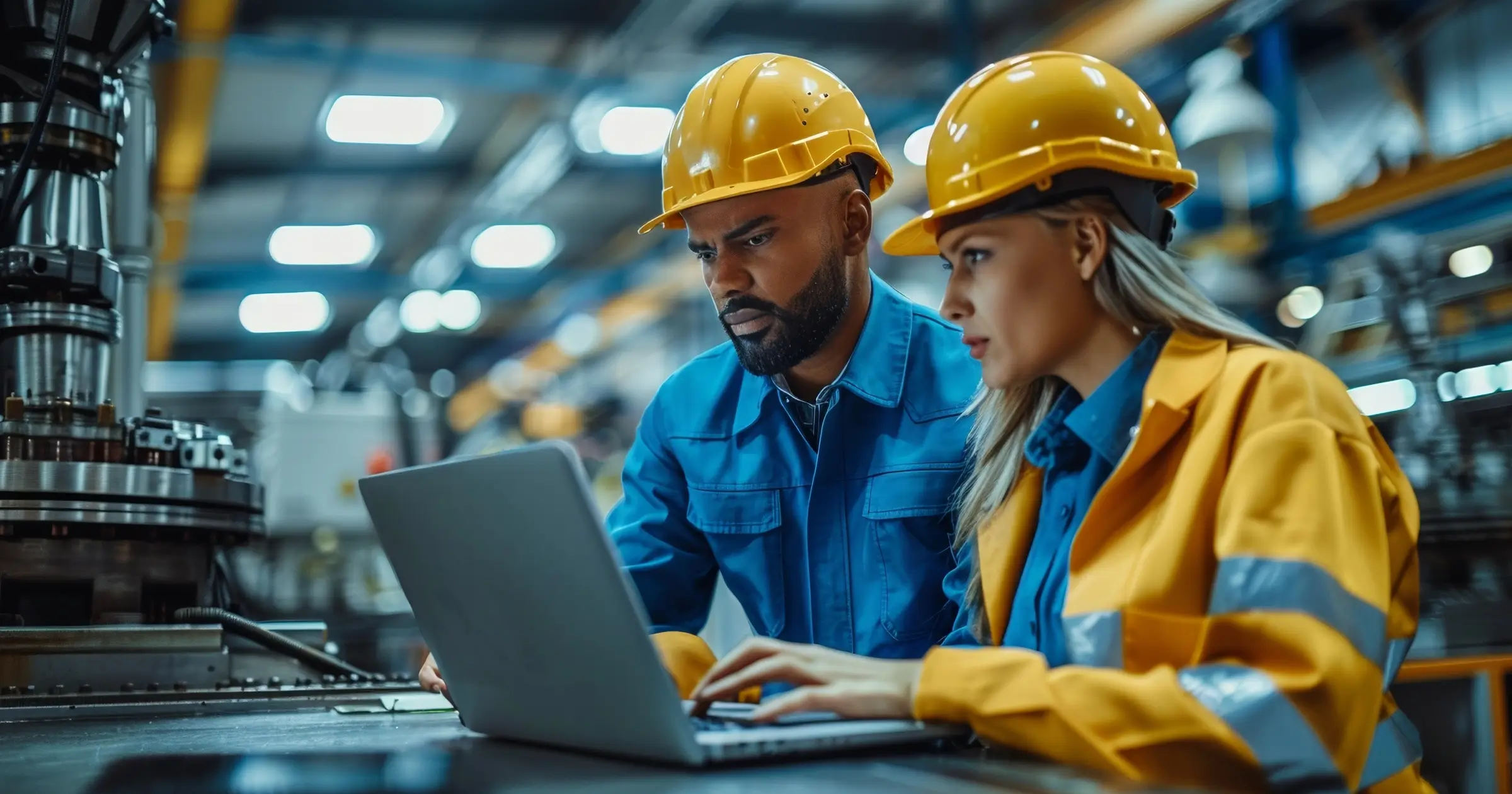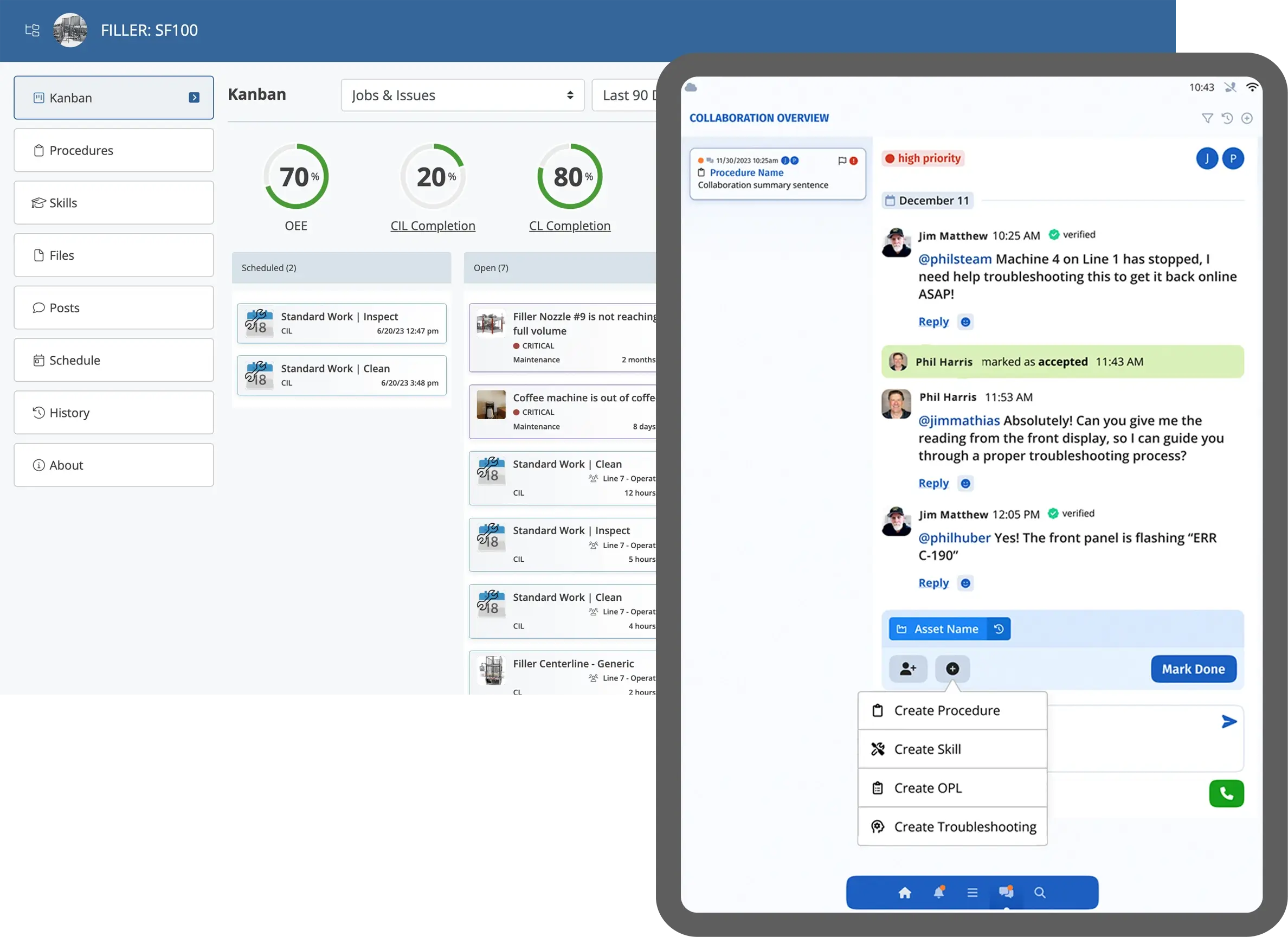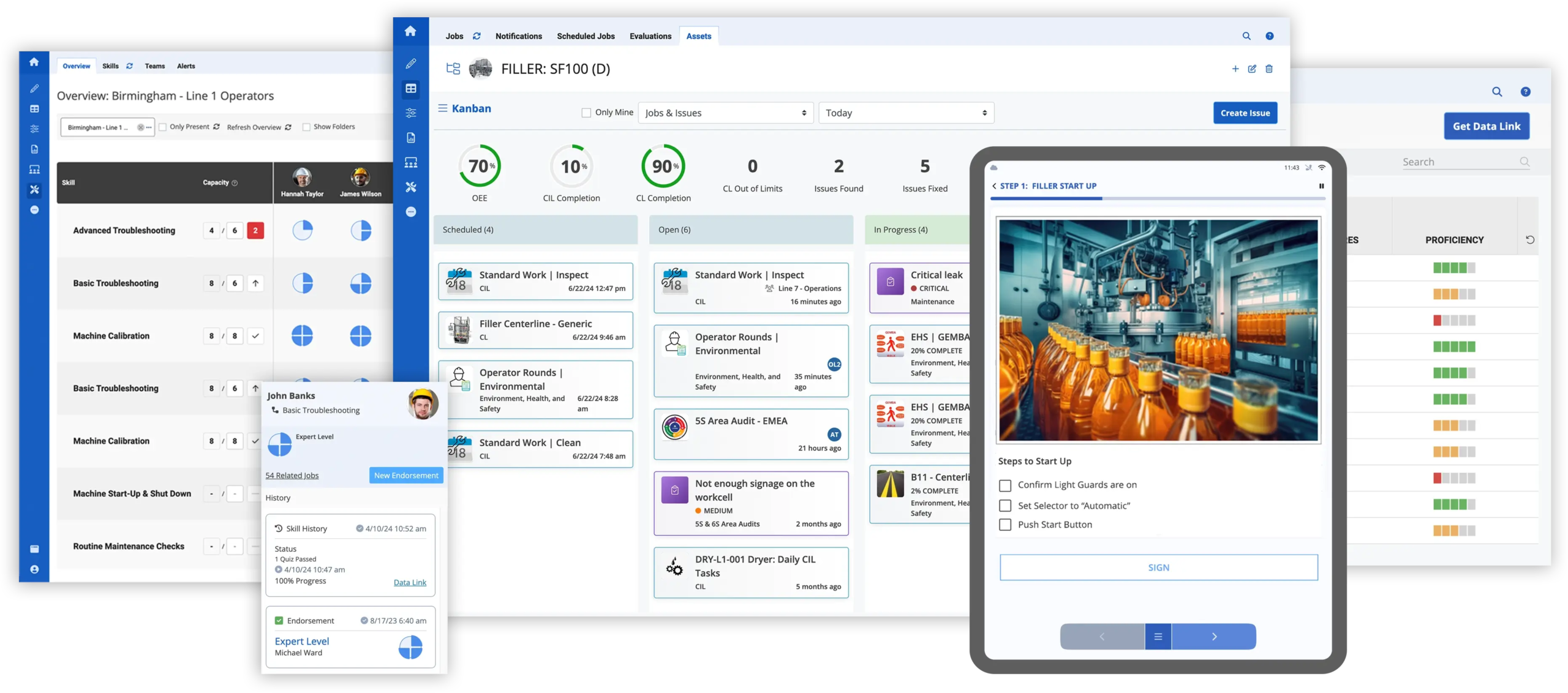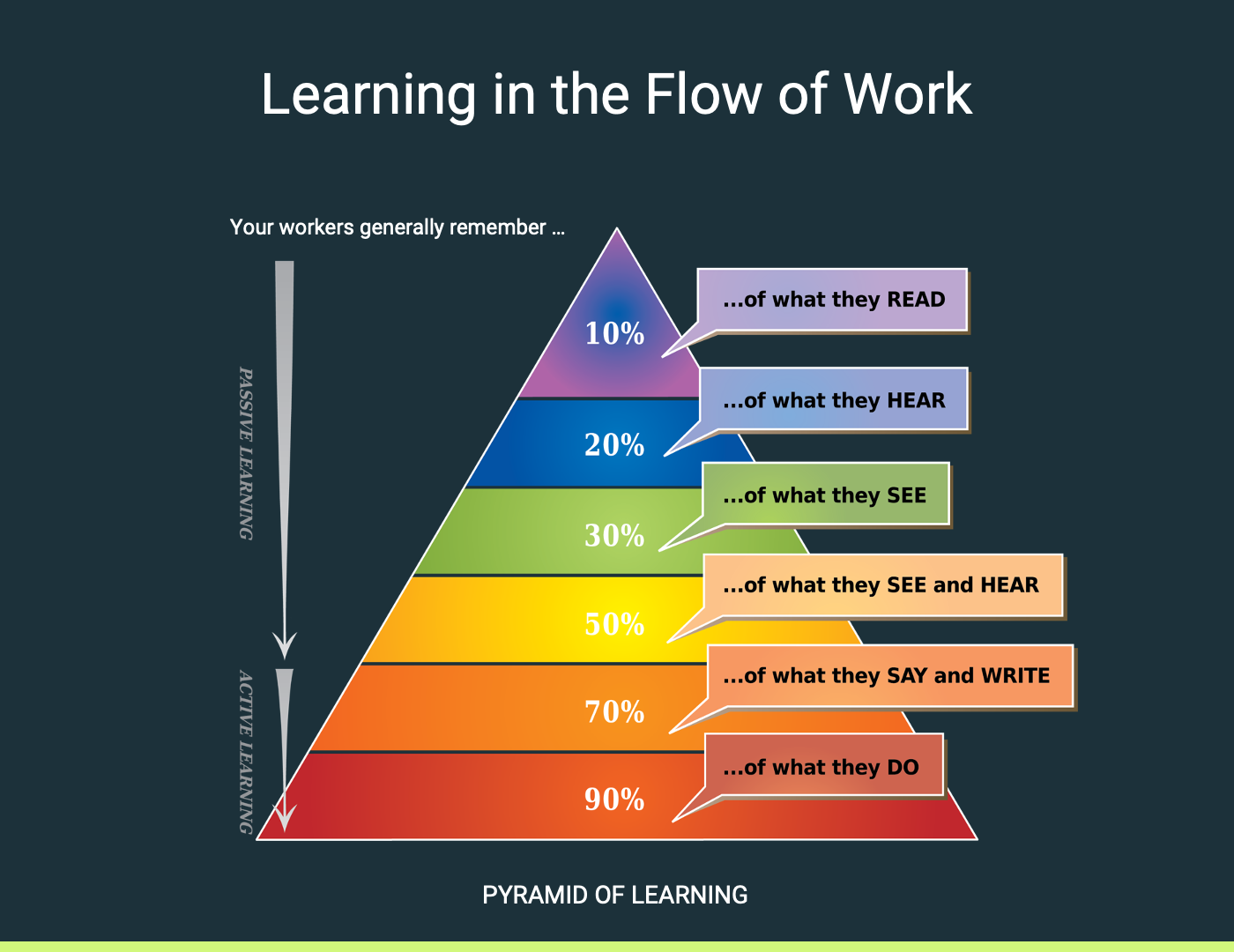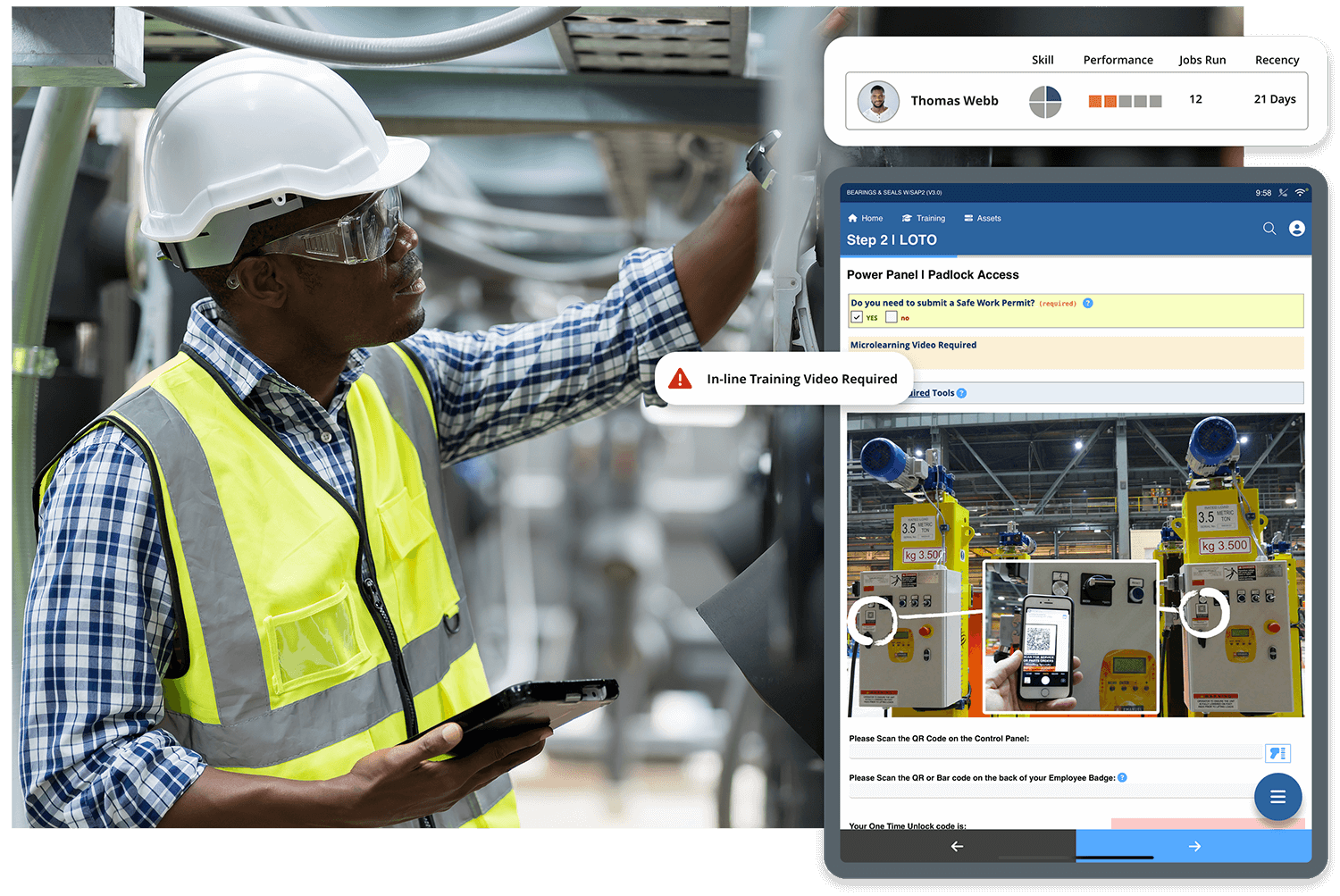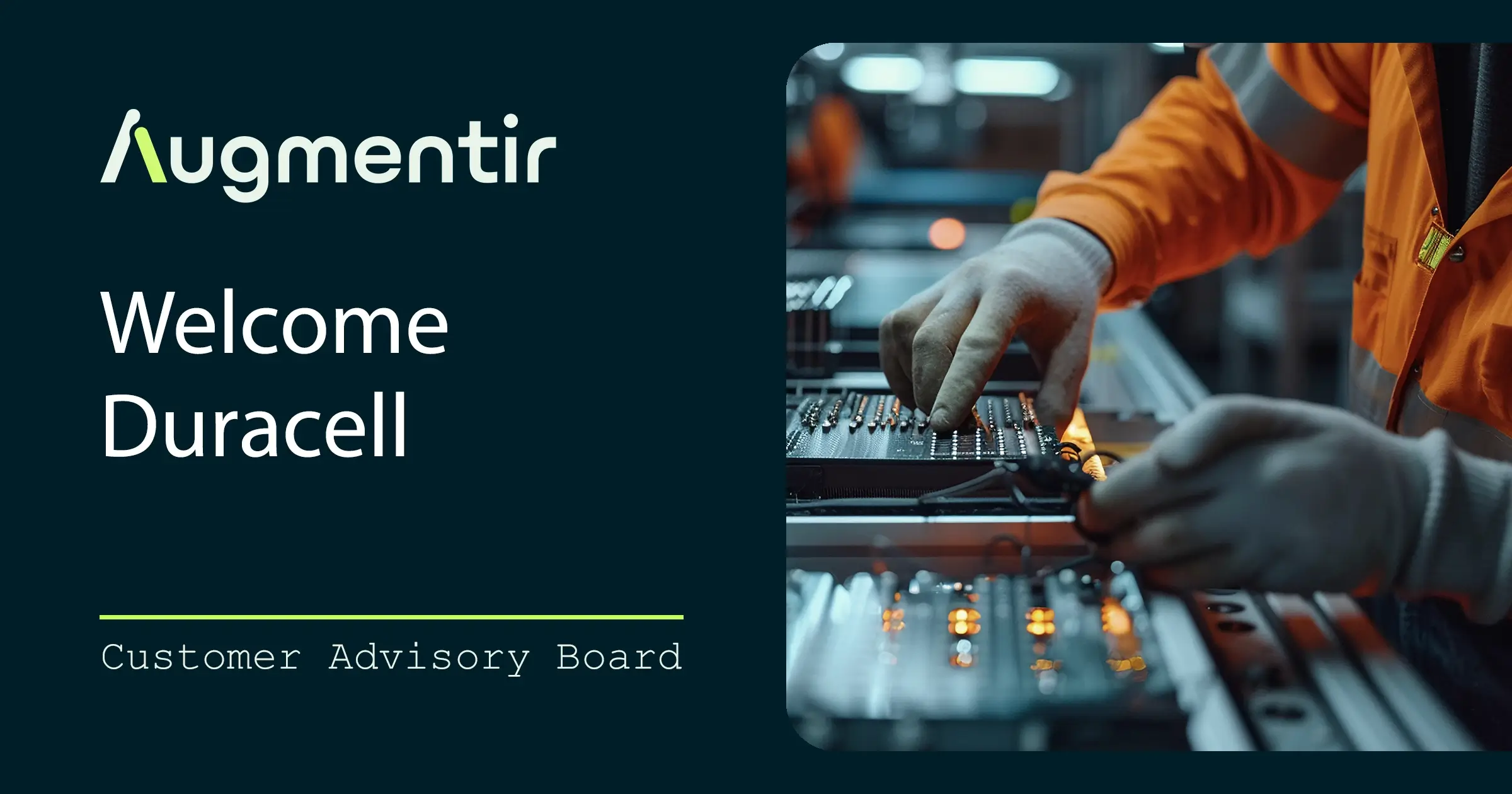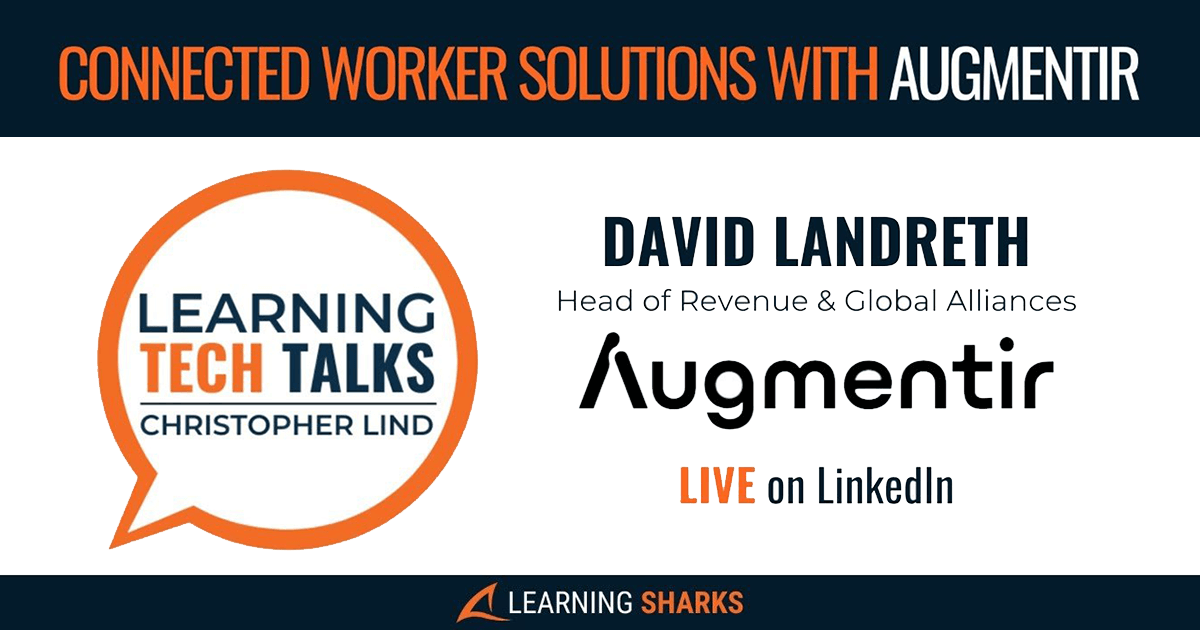Learn how Digital Standard Work effectively transforms manufacturing production and enables operational excellence.
Manufacturing organizations are feeling the pressure of increased customer demands, skilled labor shortages, and intense shifts in their frontline workforces, however, they can effectively overcome these obstacles with digital standard work enabled by smart connected worker technology. Digital standard work promotes operational excellence in manufacturing through facilitated knowledge-sharing, enhanced process standardization, increased employee engagement, improved workforce agility, and overall optimization of workforce abilities.
Standardized work in manufacturing (centerlining, machine setup/maintenance, inspection checklists, workforce training, lubrication procedures, etc.) is effective for continuously improving the most efficient and safe methods for performing work to meet customer demand while minimizing waste. Digital Standard Work takes these processes one step further, enhancing them with digital technology to establish a true culture of continuous improvement where frontline workers and shop floor processes benefit from digital workflows, collaboration, AI-powered guidance, generative AI assistants, real-time access to centralized knowledge bases, and more.
By redefining standard work for the digital age, manufacturers can achieve operational excellence through increased efficiency, quality, flexibility, and innovation across their frontline workforces. Read more on Digital Standard Work and how it effectively transforms manufacturing production and enables success:
- Digitizing Standard Work in Manufacturing
- Engaging Frontline Workers with Digital Standard Work
- Driving More Effective Collaboration
Digitizing Standard Work in Manufacturing
According to Forbes and McKinsey, through digital tools manufacturers can reduce machine downtime by 30% to 50% and quality-related costs can be reduced by 10% to 20%. Effectively digitizing manufacturing standard work through smart, AI-driven connected worker technology involves:
- Interactive Digital Work Instructions
Replace paper-based standard operating procedures (SOPs) with interactive digital work instructions that include multimedia elements like videos, images, and animations. These can be accessed by workers on tablets, wearables, and other mobile devices right on the shop floor. - Data Capture and Integration
Leverage smart tools and sensors to automatically capture shop floor data from the manufacturing process, such as torque values, cycle times, and quality checks. This data can be integrated into the digital work instructions to provide real-time feedback and ensure adherence to standards. - Workflow Automation
Automate non-value-added tasks like data entry, approvals, and documentation through connected worker platforms. This streamlines workflows, reduces errors, and frees workers to focus on value-adding activities aligned with standard work. - Knowledge Management
Digitize and centralize tribal knowledge and tacit knowledge, best practices, and process documentation in a connected worker platform. This ensures standardized methods are easily accessible and updatable for consistent knowledge sharing across the workforce.
Using smart, connected worker platforms to digitize and optimize standard work in manufacturing drives improved productivity, ensures better and more consistent product quality, and fosters a safer work environment for enhanced operational success. Connected worker platforms that digitize standard work can also be used to support a company’s broader IWS (integrated work systems) strategy, which helps improve operational excellence in manufacturing.
Using a low-code no-code workflow builder simplifies the creation of complex digital workflows for frontline work processes. Furthermore, integrating remote collaboration tools facilitates real-time guidance, knowledge sharing, and the ability to update standard work procedures based on captured tribal knowledge.
Engaging Frontline Workers with Digital Standard Work
As manufacturing workforces shift due to retirement and tribal knowledge loss, effective workforce training has become critical for continued success. Interactive digital interfaces, augmented and enhanced capabilities, and wearable technologies make standard work practices like workforce training more engaging and accessible, improving workforce adoption and adherence.
Digital tools facilitate information visibility and knowledge sharing among frontline workers, enabling them to learn from each other, share best practices, and contribute to a culture of continuous improvement. By tracking and analyzing performance data from digital systems, manufacturers can identify top performers, provide personalized feedback, and recognize achievements, fostering a sense of engagement and motivation among frontline workers.
Digital Standard Work empowers frontline workers by involving them in process improvements, recognizing their contributions, and providing opportunities for learning and growth, leading to increased job satisfaction and commitment. By leveraging digital technologies and interactive interfaces, manufacturers can transform Standard Work procedures into engaging and empowering experiences for their frontline workforce, driving productivity, quality, and a culture of continuous improvement.
Most importantly it gives manufacturing frontline and factory staff the tools they need to be successful and thus create a more satisfied environment where employees come to work and feel good about what they are doing and how they are doing it.
Driving More Effective Collaboration
Digital standard work also facilitates better collaboration across your frontline teams. Effective communication starts with digital tools, and by implementing digital standard work with connected worker technology, manufacturers can connect frontline team members across shifts, departments, locations, and languages, improving visibility into workforce planning, training, skills tracking, daily management, troubleshooting, and more.
From frontline workers to executives, a digital standard work strategy that leverages connected worker technology allows employees to collaborate seamlessly and easily access information. Connected worker solutions that include industrial collaboration tools allow workers to virtually connect to subject matter experts for remote guidance and assistance. These software tools are becoming commonplace in manufacturing and other industrial settings, where companies are faced with an increasingly distributed and remote workforce, yet still require team collaboration to help troubleshoot and resolve issues. In a nutshell, workers can get more done with greater accuracy in less time.
Interested in learning more?
If you’d like to learn more about how Augmentir and our AI-powered connected worker solution digitizes standard work, streamlines operations, improves communication, and empowers frontline workers with the tools and information they need, schedule a demo with one of our product experts.

